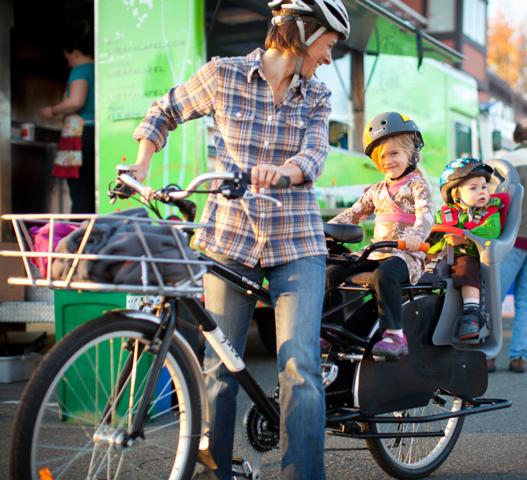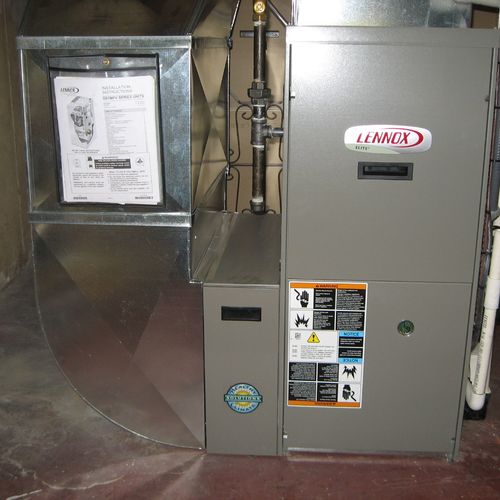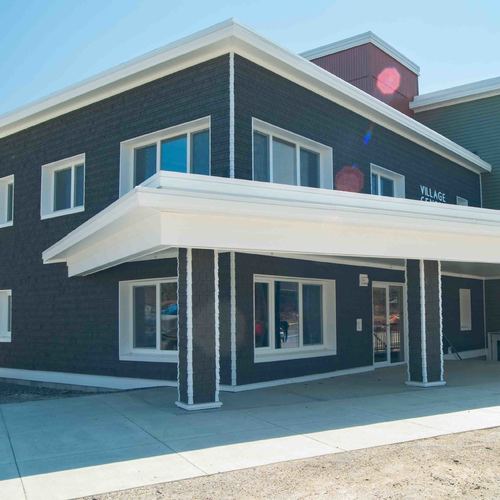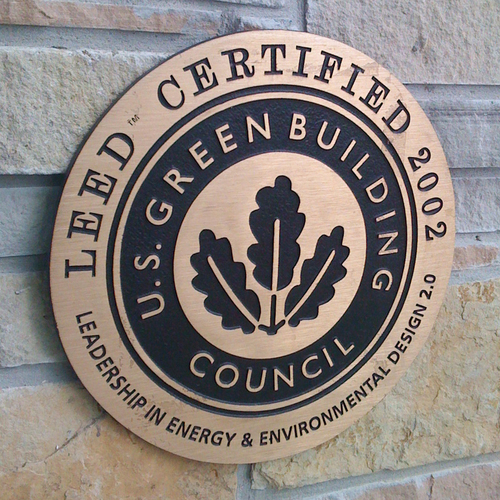
Image Credit: Yuba
I’m not a big shopper. I don’t even particularly like getting presents. Our society is just too much about consumption. Nonetheless, as I’ve done on occasion in the past, I’m providing below some Christmas shopping ideas.
1. LED light bulb
Every time I turn around, it seems, I see another LED light bulb. Among the screw-in replacement lamps, there are many good products — but also some that aren’t so good. Look for products from a reputable manufacturer (a company that’s been around for a while), and select a product that carries an Energy Star label. The most common problem with LED lamps is failure due to poor heat management; I’ve had products fail after less than a year.
My latest LED lamp purchase — a Philips EnduraLED 12.5-watt lamp that replaces a 60-watt incandescent light bulb — seems like a real winner. It sells for about $25, but you will sometimes find them on sale for less.
2. Kill-a-Watt meter
This has been on my Christmas list before. It’s a gadget that lets you measure the electrical consumption of plug-in appliances, equipment, and other devices. It can help us sleuth out hidden stand-by (phantom or vampire) losses — the power draw from a television that’s turned off or a WiFi router that’s on 24-7.
I have several Kill-a-Watt meters and regularly lend them to friends. The cost is about $20. Note that it doesn’t work for hard-wired appliances like most dishwashers or 220-volt products.
3. Smart power strip
Along with measuring the phantom electric loads from televisions and stereo equipment, you can do something about it by installing a smart power strip that turns off selected circuits either when an occupancy sensor senses that no one is present or after a period of inactivity, as indicated by lower current draw (say from a DVD player). There are a number of these devices on the market. I just bought a TrickleStar power strip at a sale price of $25. There’s also the SmartStrip LCG3, the Take Charge Power Saver Smart Strip, the Belkin Conserve Socket, and the WattStopper Isolé Power Strip with Personal Sensor, to mention a few. These products also include surge protection.
4. Electroluminescent night light
When I covered these little devices before there was just one company making them: LimeLite Technologies. Today there are at least several others. These plug-in night lights use only trickle of electricity (about 2¢ worth per year, according to LimeLite), but provide a soft glow at night (a photosensor turns it off in the daytime). The cost is about $5, though you may find them sold in two packs for not much more. Lots of companies buy them in bulk, printed with their logos and give them away as premiums.
5. Low-flow showerhead
I know, it sounds boring, but a pleasing shower that saves water means money in the pocket. Expect to spend about $25 for a really good 1.5 gallon-per-minute showerhead. I’ve used a Delta H2Okinetic model for five or six years in our rural home with low (and fluctuating) water pressure. It delivers just 1.5 gpm at 60 psi — I measured about 1.4 gpm at our house, and we love it. Delta reengineered the showerhead to produce large drops (that retain heat) and deliver them at high pressure.
6. Programmable thermostat
For people with standard gas- or oil-fired forced-air or hydronic heat, a properly operated programmable thermostat can save hundreds of dollars of energy per year. The key here is “properly operated.” Studies have shown that most programmable thermostats don’t save energy because the homeowners don’t know how to use them. Take the time to figure it out, and program it properly. A few minutes of set-up could buy several elegant dinners per year. Typical costs are $50 to $100.
7. Smart phone app that encourages you to walk more
I don’t have one of these apps, but I have some friends who use them religiously, and the devices have changed their lives by encouraging them to walk more. I guess for some people that competitive drive — how many miles did I walk this week? — makes a huge difference. And if that what makes the difference, go for it.
These apps use GPS features of smart phones to measure how far you’ve walked, run, or bicycled, including elevation gain, etc., as long as you have the phone on your belt or in your pocket. Among the leading apps for iPhone are MapMyWalk, Pedometer PRO, Walkmeter, and RunKeeper. There are dozens, if not hundreds, of other similar apps for iPhone and Android phones. Most cost a few dollars or are free — though I suspect the free ones remind you about upgrades with annoying frequency.
8. Public transit passes
As an easy gift to employees that helps the planet, not much beats transit passes — as long as there’s a public transit option where the passes can be used. When I’ve lived in a place where I could use public transit regularly, I loved the chance to read the paper (today it would probably be an iPad), avoid traffic congestion, and skip the parking hassle.
9. Cargo bike
Cargo bikes are cool. I love the idea of being able to use a bike to haul groceries, pick up kids at school, even help your friends move. There has been a veritable explosion of interest in cargo bikes, with more than a dozen manufacturers now offering them in the U.S. As with a lot of cool stuff, the modern incarnation of this trend came here Europe — especially Holland and Denmark. But a sizeable player remains Worksman Cycles in Queens, New York — the oldest continually operating bicycle manufacturer in the country (founded in 1898, during the first utility bike boom).
Brattleboro’s Specialized Sports recently started carrying Yuba cargo bikes, and a recent transplant to town, Dave Cohen, helped to launch the cargo bike revolution in Berkeley in the early 1990s, when he started the worker cooperative Ped-Ex (later to change its name to Pedal Express when threatened with a lawsuit from another delivery company with a similar-sounding name that must have been worried about losing business to the bikes.) A lot of carbo bikes, including Yuba products, are available with battery-powered electric booster motors.
10. Donate to a good cause in the name of friends and family
The final gift idea is not a product at all, but rather donating to a cause that will give you and the recipients of your generosity a sense of satisfaction. There are thousands of good causes related to energy and the environment — from national organizations like the Rocky Mountain Institute, to regional groups like the Northeast Sustainable Energy Association, to local initiatives like Windham and Windsor Housing Trust and Co-op Power of Southern Vermont.
Alex is founder of BuildingGreen, Inc. and executive editor of Environmental Building News. He also recently created the Resilient Design Institute. To keep up with Alex’s latest articles and musings, you can sign up for his Twitter feed.
Weekly Newsletter
Get building science and energy efficiency advice, plus special offers, in your inbox.















3 Comments
LED bulbs
Consumer Reports came out with an article on LED bulbs a short while ago. One was a clear winner - I think it was the one you mention, but I'm not sure.
thanks for the list, Alex
and Merry Christmas from another grinch who doesn't like gifting ...
As part of the energy upgrades on our "new" house, I've spent a ton of money and your list reminds me of a number of expensive odds and ends I've overlooked -- I have two smart strips but I'll need to get 2 more (for the computers).
It's amazing how many bulbs there are in a simple house. The building is not very large (under 1600 sf) but I've put over a thousand dollars in LEDs (for lights we use pretty often) and CFLs (for lights that are rarely used. Two specifications for bulbs are fairly difficult to find -- "daylight" (i.e., 5000K) bulbs seem to be replaced on the shelves and catalogs with "warm white" which I like less. And candleabra based bulbs that don't look industrial (for my wife's chandeliers) had to be ordered from CA ... and are back ordered for a month -- apparently I'm not the only one looking for the suckers.
Philips LED lamps
I agree on the Philips LED lamps. My wife always hated CFLs: Noisy, slow warm up, cold light temperature even though they claim to be warm. Therefore, we stuck to incandescents. With the arrival of LED lamps I tried a few and I'm superimpressed with the Philips line, especially because the light temperature is almost identical to incandescents. The only thing is, it looks a bit ugly in fixtures where you can see the bulb but we have plenty of fixtures where this is not the case. And here in NH there is a $5 rebate on the 60 Watt replacement lamp.
Log in or create an account to post a comment.
Sign up Log in